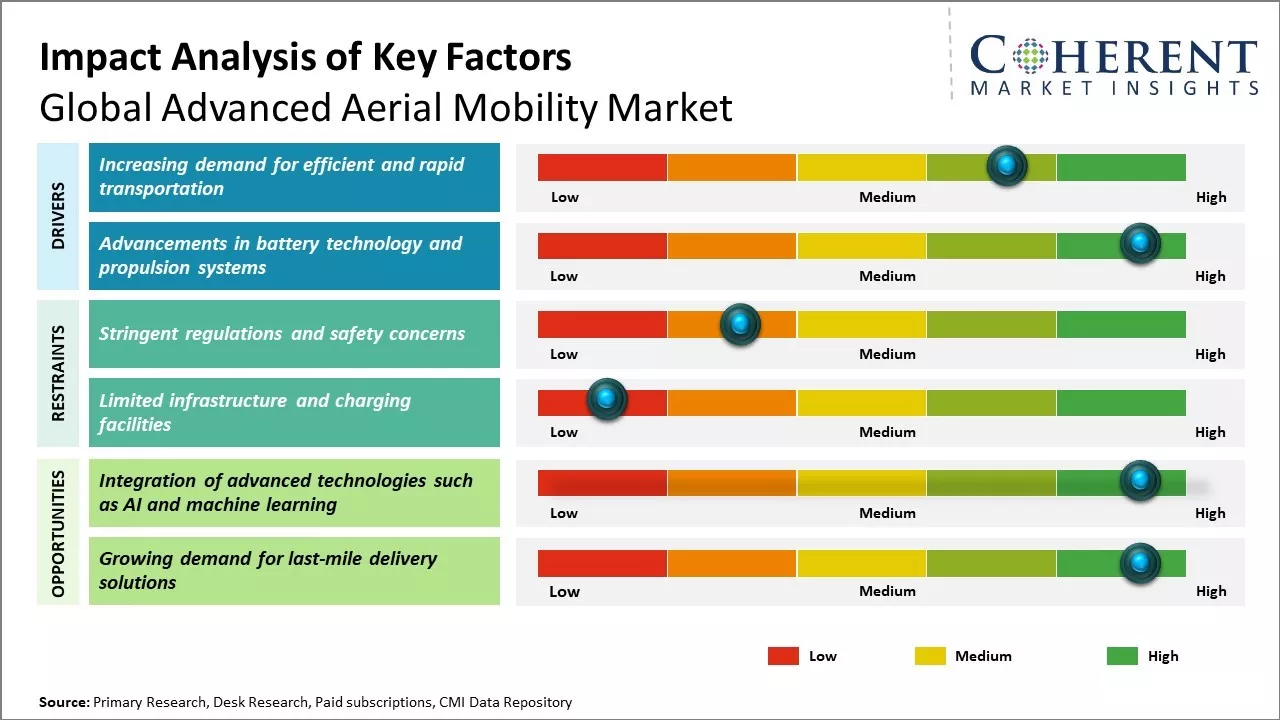Global advanced aerial mobility market is estimated to be valued at USD 12.39 Bn in 2025 and is expected to reach USD 47.08 Bn by 2032, exhibiting a compound annual growth rate (CAGR) of 21.0% from 2025 to 2032.

To learn more about this report, Request sample copy
Advanced aerial mobility involves the deployment of urban air mobility vehicles for transporting passengers or cargo. Factors, such as increasing global traffic congestion, need for faster modes of transportation, and technological advancements in aerial vehicles, are fueling the demand for urban air mobility solutions. Companies such as Archer Aviation, Aurora Flight Sciences, Bell Textron Inc., Boeing Company, etc. are investing in the development of electric vertical take-off and landing (eVTOL) vehicles to enable quick point-to-point air transportation within cities. Ongoing pilot projects, favorable regulations, and declining battery costs are likely to boost the commercialization of advanced aerial vehicles during the forecast period. However, threats such as high solution costs, safety concerns, and infrastructural challenges remains major restraints for the market.
Increasing demand for efficient and rapid transportation
The continuous growth of urban population across major countries like Canada, Japan, U.S., etc. has led to rising traffic congestion and longer commute times. The infrastructure in most cities is already facing challenges in coping with the growing vehicle fleet size. Building new roads and highways requires huge investments and space which is becoming scarce in dense urban environments.
At the same time, there is a growing need for instant, flexible and seamless transport solutions between different locations within a city. The current modes of public transportation like metros and buses have limitations in terms of flexibility of routes and last-mile connectivity. Traditional modes of air transportation like helicopters are expensive and not scalable. This is where advanced aerial vehicles like eVTOL and cargo drones have a huge potential to resolve these problems and efficiency fill the gaps. Offering point-to-point, three-dimensional mobility, these new vehicles can reduce congestion, cut travel times and open up new possibilities for instant delivery of goods.
In December 2020, Joby Aviation, a U.S.-based aerospace company developing an all-electric vertical take-off and landing aircraft for a fast, quiet and affordable air taxi service, acquired Uber Elevate, Uber's urban air mobility initiative. The acquisition allowed Joby Aviation, which has raised US$ 820 million in investment and employs more than 500 people, to incorporate Uber Elevate's expertise in air mobility services and expand its presence in the urban air transportation market.
Joining thousands of companies around the world committed to making the Excellent Business Solutions.
View All Our Clients